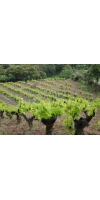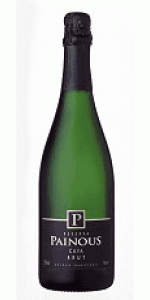Wine from Cava

Cava is a wine producing region in Spain and means “cellar” to the Catalonian people who live there. The sparkling wine crafted in that region goes by the name Cava. The winemaking region stretches through the area and encompasses areas that produce Cava wines. The most prominent and famous company in the region is Codorniu because the company first led the way in winemaking and is still the most classical. Vines used in the production of Cava wines are typically grown in Catalonia, and include varieties such as Macabeo, Xarel-lo, Parellada, and at time, Chardonnay is grown. When out of the Catalonia region, the Macabeo variety is solely used. A rose wine of Cava is also available, and the wine is crafted from a robust blend of the grape varieties Carinena and Garnacha Tinta. The Cava region’s small group of 50 individuals were spread out and then dwelled in three separate villages in the region. These villages are called Ansovell, el Querforadat, and Cava. Although not all sparkling wines from the region are Cava wines, since not all of the wines are made in the traditional Spanish method used to craft Champagne. That method requires the wines to sit in bottles used for champagne.
Grape varieties: Parellada 40%, Macabeo 30% and Xarel·lo 30%.
Harvest: Occurs in 3 stages. Macabeo within the first fortnight of September, Xarello during the second fortnight in September and Parellada within the first fortnight of October.
First fermentation and vinification: This is a "Methode Traditionnelle" with
soft pressing of the grapes to obtain 60% of the must (flower must). It is decanted and fermented with controlled temperatures of 18ºC for 20 days until it fully develops the primary aromas of the grapes.
Secondary fermentation: takes place in the bottle for 40 days at a temperature of 16ºC and final ageing for 20 months. Residual sugar: 7 gr. per litre.
Color: Pale yellow with green tones. Shiny and clear.
Aromas: Powerful in the nose, clean. Ageing aromas.
Taste: Soft and well structured, long aftertaste and good balance of acidity and sugar contents.
Gastronomy: It should be served chilled between 5ºC and 7ºC. A flute type glass is recommended. Excellent with pasta, red and soft meats and white fish.Painous is unique in that it is a Cava-Joven style sparkling wine, meaning, the wine receives the minimum aging of 9 months. This allows crisp, fresh aromas and flavors to be expressed. It is delicious for aperitif.
Review:
"Golden straw color. Aromas and flavors of brown butter poached pear, marzipan, lemon and apple, and floating in the pool with the grill going with a round, crisp, finely carbonated, dry medium body and an interesting, medium-length finish manifesting notes of dried apples, apricot jam, blanched almonds, and jasmine rice with no oak flavor. Layers of flavor from fruit to earth dance on the tongue for a classic expression of sparkling wine from Catalonia."
- Beverage Testing Institute (November 2022), 91 pts - Gold Medal
- back
Selected Options
Regions
Categories
Pricing
Countries
Regions
Grape Types
Wineries
Organic/Free Shipping
Domaine Michel Magnien has evolved into a Burgundy producer of a singular style and philosophy from cellars located in the village of Morey-Saint-Denis. In 1993, Frédéric Magnien persuaded his father Michel to begin domaine bottling. The domaine is now certified biodynamic by Demeter and the wines are produced without the use of new oak.
The domaine’s 45 acres are spread across the villages of Morey-Saint-Denis, Gevrey-Chambertin, Chambolle-Musigny, and Vosne Romanée, with holdings in several premier cru and grand cru vineyards. These include the grand crus Clos de la Roche, Clos Saint-Denis, and Charmes-Chambertin. Frédéric Magnien maintains an average vine age of 50 years.
Morey-Saint-Denis 1er Cru "Climats d'Or" is a blend of five premier crus in the village of Morey-Saint-Denis: Cheseaux, Charrières, Clos Baulet, Chaffots, Monts Luisants. The wine was fermented with indigenous yeasts in stainless steel tanks followed by several months aging in half terracota amphora & half used pièce. Around 20% whole clusters were included in the cuvée.
Morey-Saint-Denis 1er Cru "Climats d'Or" combines the structure of Gevrey-Chambertin with the perfume of Chambolle-Musigny. This wine shows fresh red berries on the nose with notes of violets, spice, and earth. Old vines and heavier soils give this wine weight and richness on the palate.
Red Burgundy might be the world’s most flexible food wine. The wine’s high acidity, medium body, medium alcohol, and low tannins make it very food friendly. Red Burgundy, with its earthy and sometimes gamey character, is a classic partner to roasted game birds, grilled duck breast, and dishes that feature mushrooms, black truffles, or are rich in umami.
Ti Cuntu… means “I will tell you a story…” in Sicilian dialect and it refers to the ability of the wines made from these native grapes to tell the story of their terroir and of their history. The label shows the dry stone walls and the wild myrtle which characterize their territory.
Frappato is a rare native grape of Vittoria and is almost exclusively grown in Eastern Sicily. The vineyards lie on the sides of Mont Iblei at 300 meters above sea level on a south-west exposure. The relatively infertile terrain encourages the concentrated structure with a light color and beautiful aromatics. Irrigation is generally avoided. There are 4,000 plants per hectare. Agriculture is sustainable and no herbicides or pesticides are used and wild herbs fill the vineyard rows.
Color: Light cherry red with garnet reflections.
Bouquet: A ripe strawberry, black cherry, roses and violets fill the bouquet along with notes of blackberries, raspberries and blueberries.
Taste: Fresh and berry-filled with an intriguing root beer note. The tannins are refined and the acidity lively. The finish is notable and long.
Excellent with cold meats and salamis, seafood and light pasta dishes.





